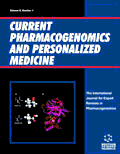
Full text loading...
This review delves into the potential of epigenetic modifications as therapeutic targets in the management of hypertension, a major cardiovascular risk factor. Epigenetic mechanisms, particularly DNA methylation, histone modifications, and microRNA (miRNA) activity, play pivotal roles in gene expression regulation that pertains to blood pressure control. These modifications can affect several pathways involved in vascular function, renal sodium handling, and sympathetic nervous system activity, which are critical in the development and progression of hypertension. Recent studies have suggested that epigenetic modifications could serve as both biomarkers for hypertension and targets for novel therapeutic approaches. This article reviews the current understanding of epigenetic influences on hypertension and discusses the potential of epigenetic modifications to serve as a basis for the development of new therapeutic strategies.

Article metrics loading...

Full text loading...
References


Data & Media loading...

